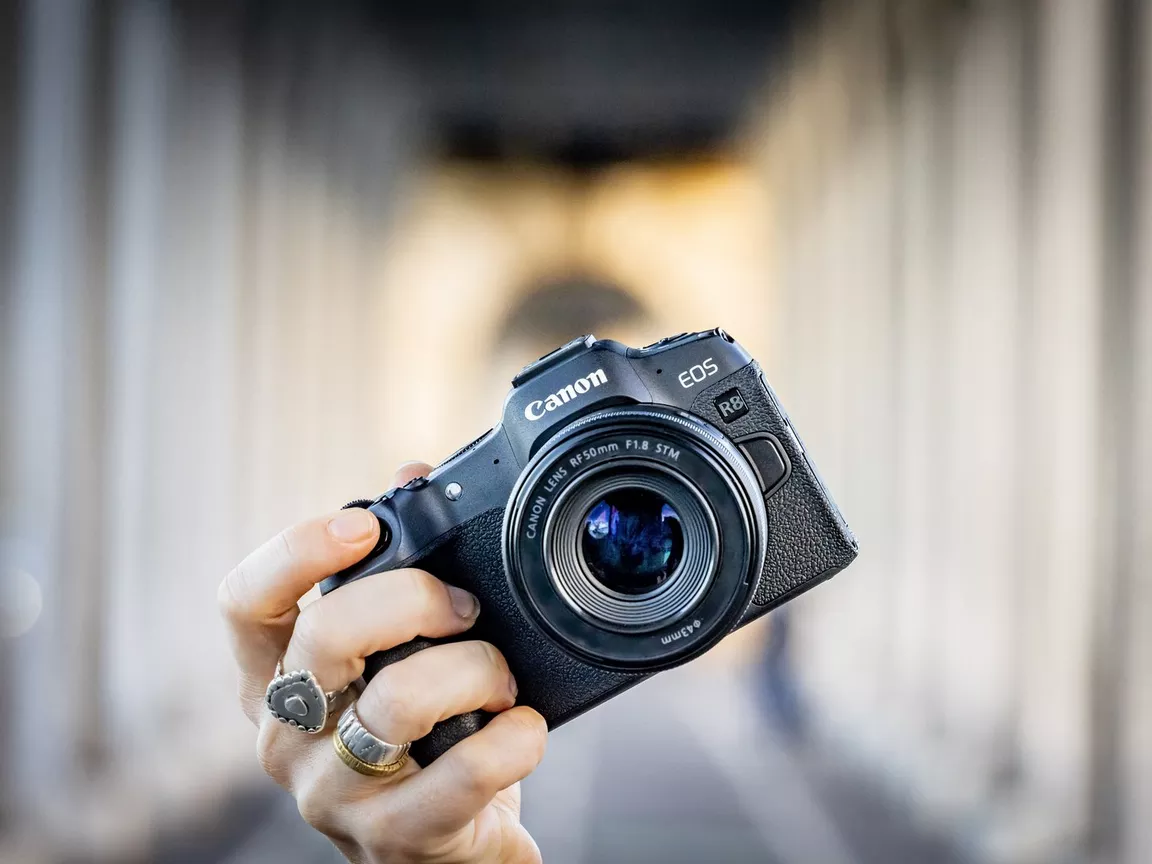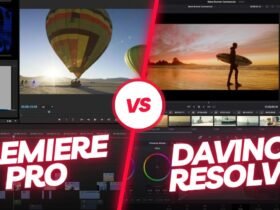The Canon EOS R8 is a highly regarded mirrorless camera, celebrated for its superior image quality, rapid autofocus system, and user-friendly operation. It’s an ideal choice for capturing everyday moments and is equally adept at both photography and videography. However, even with its impressive performance, users might occasionally face challenges, such as autofocus not working properly. This article is here to assist if you’re experiencing this issue with your Canon EOS R8.
We will explore the various reasons why the autofocus might malfunction and offer practical solutions to resolve these problems. By identifying the root causes and applying the recommended fixes, you can restore the full functionality of your Canon EOS R8’s autofocus system and continue enjoying a smooth photography or videography experience. Let’s delve into troubleshooting the autofocus issues of the Canon EOS R8.
Canon EOS R8 Autofocus Not Working: Causes and How to Fix It

1. Incorrect Focus Mode
One of the possible causes of autofocus not working on your Canon EOS R8 is that you have selected the wrong focus mode for your shooting situation. The EOS R8 has three focus modes: One-Shot AF, AI Servo AF, and AI Focus AF. Each mode has a different way of tracking and locking focus on your subject.
- One-Shot AF is suitable for still subjects, such as portraits, landscapes, or architecture. The camera will lock focus when you press the shutter button halfway or the AF-ON button, and will not change until you release the button or take the picture.
- AI Servo AF is suitable for moving subjects, such as sports, wildlife, or action. The camera will continuously track and adjust focus on your subject as long as you keep pressing the shutter button halfway or the AF-ON button.
- AI Focus AF is a hybrid mode that switches between One-Shot AF and AI Servo AF automatically depending on the subject’s movement. The camera will start with One-Shot AF and switch to AI Servo AF if the subject starts to move.
To select the focus mode, you can use the AF mode button on the top of the camera, or the Q button on the back of the camera. You can also customize the AF mode selection using the menu settings.
If you have selected the wrong focus mode for your subject, the camera may fail to focus properly or lose focus easily. For example, if you use One-Shot AF for a moving subject, the camera will lock focus on the initial position of the subject, and will not follow the subject’s movement. If you use AI Servo AF for a still subject, the camera may hunt for focus or change focus unintentionally.
Therefore, it is important to choose the correct focus mode for your shooting situation, and check the focus mode indicator in the viewfinder or on the LCD screen before taking a picture. By doing so, you can avoid autofocus problems caused by incorrect focus mode selection.
2. Manual Focus Mode Activated
Another possible cause of autofocus not working on your Canon EOS R8 is that you have accidentally activated the manual focus mode on the camera. The manual focus mode allows you to adjust the focus manually by rotating the focus ring on the lens. However, this also disables the autofocus function of the camera.
To check if you have activated the manual focus mode, you can look at the focus mode indicator in the viewfinder or on the LCD screen. If you see MF instead of AF, it means that the manual focus mode is on. You can also press the Q button on the back of the camera and look for the Focus mode icon. If it shows MF, you need to change it to AF.
To change the focus mode from manual to autofocus, you can use the Q button and select the Focus mode icon. Then, you can choose between One-Shot AF, AI Servo AF, or AI Focus AF, depending on your shooting situation. Alternatively, you can use the AF mode button on the top of the camera and rotate the main dial to select the focus mode.
If you have activated the manual focus mode unintentionally, changing it back to autofocus mode should solve the problem. However, if you want to use the manual focus mode intentionally, you need to make sure that you adjust the focus ring correctly and confirm the focus before taking a picture. You can also use the MF Peaking function to assist you with manual focusing.
3. Autofocus Lock Engaged
Sometimes, the autofocus may not work on your Canon EOS R8 because you have unintentionally engaged the autofocus lock function. The autofocus lock function allows you to lock the focus on a specific subject and recompose the shot without changing the focus. This is useful when you want to focus on an off-center subject or when the subject is not covered by any of the autofocus points.
To use the autofocus lock function, you need to press the AF-ON button on the back of the camera after focusing on your subject. This will lock the focus and disable the autofocus function until you release the button or take the picture. You can also customize the AF-ON button to perform other functions, such as exposure lock or metering mode selection, using the menu settings.
However, if you press the AF-ON button accidentally or forget to release it, the autofocus function will remain locked and will not work when you press the shutter button halfway. This may cause you to miss the focus or get blurry pictures. To avoid this problem, you need to check the AF-ON indicator in the viewfinder or on the LCD screen before taking a picture. If the indicator is on, it means that the autofocus lock function is engaged and you need to release the AF-ON button to resume the autofocus function.

4. Low Light or Low Contrast Scenes
Sometimes, the autofocus may not work on your Canon EOS R8 because the camera cannot detect enough light or contrast in the scene. The autofocus system relies on the difference between light and dark areas to determine the focus distance. In low light or low contrast scenes, such as a dark room, a foggy landscape, or a plain wall, the autofocus system may struggle to find a clear focus point and may hunt for focus or give up altogether.
To avoid this problem, you need to increase the amount of light or contrast in the scene. You can do this by using a wider aperture, a slower shutter speed, a higher ISO, or an external flash. You can also use the AF assist beam function, which emits a red light from the camera or the flash to help the autofocus system in dim conditions.
Another solution is to focus on a more contrasty detail within the scene, such as an edge, a corner, a pattern, or a texture. You can use the center cross sensor, which is the most sensitive and accurate of the autofocus points, and lock the focus on the contrasty detail. Then, you can recompose the shot and take the picture. You can also use the Spot AF function, which allows you to select a smaller area of focus within the center point.
By increasing the light or contrast in the scene, or by focusing on a more contrasty detail, you can improve the performance of the autofocus system in low light or low contrast situations. This will help you get sharper and clearer pictures with your Canon EOS R8.
5. Lens Compatibility Issues
Sometimes, the autofocus may not work on your Canon EOS R8 because the lens you are using is not compatible with the camera. The EOS R8 is a mirrorless camera that uses the RF mount, which is different from the EF or EF-S mounts used by Canon DSLR cameras. Therefore, you cannot use EF or EF-S lenses directly on the EOS R8 without an adapter.
If you are using an adapter to mount an EF or EF-S lens on the EOS R8, you need to make sure that the adapter is compatible with the camera and the lens. Canon offers three types of adapters for the RF mount: the Mount Adapter EF-EOS R, the Control Ring Mount Adapter EF-EOS R, and the Drop-In Filter Mount Adapter EF-EOS R. These adapters are designed to maintain the full functionality of the EF and EF-S lenses, including autofocus, image stabilization, and lens correction.
If you are using a third-party lens that is not made by Canon, you also need to check if the lens is compatible with the EOS R8 and the RF mount. Some third-party lens manufacturers, such as Sigma, Tamron, and Tokina, offer lenses that are designed for the RF mount or can be adapted to it. However, not all of their lenses may work properly with the EOS R8, especially older models or models that have not been updated. Therefore, you need to check the compatibility list and the firmware update information provided by the lens manufacturer before using the lens.

6. Dirty or Damaged Lens Contacts
Sometimes, the autofocus may not work on your Canon EOS R8 because the lens contacts are dirty or damaged. The lens contacts are the metal pins on the rear of the lens that connect to the camera body and transfer information between them. If the lens contacts are dirty, they may interfere with the communication and cause the autofocus to malfunction. If the lens contacts are damaged, they may prevent the communication altogether and render the autofocus inoperable.
To avoid this problem, you need to clean the lens contacts regularly and carefully. You can use a clean, dry cloth or a cotton swab lightly dampened with isopropyl alcohol to gently wipe the lens contacts. Do not use any abrasive or corrosive materials that may scratch or damage the lens contacts. Do not touch the lens contacts directly with your fingers, as this may cause corrosion or static electricity. Do not apply too much pressure or force, as this may bend or break the lens contacts.
Another solution is to check the lens contacts for any signs of damage, such as cracks, dents, or missing pins. If you notice any damage, you need to contact the nearest Canon Service Center or the lens manufacturer for repair or replacement. Do not attempt to fix the lens contacts yourself, as this may void the warranty or cause further damage.
7. Camera Firmware Outdated
Sometimes, the autofocus may not work on your Canon EOS R8 because the camera firmware is outdated. The firmware is the software that controls the camera’s functions and features. Canon may release firmware updates to improve the performance, compatibility, or stability of the camera. Some firmware updates may also fix bugs or glitches that affect the autofocus system.
To avoid this problem, you need to check the firmware version of your camera and compare it with the latest version available on the Canon website. If your firmware version is lower than the latest version, you need to download and install the firmware update following the instructions provided by Canon. You also need to make sure that your camera battery is fully charged and that you have a backup of your images before updating the firmware.
Another solution is to check the firmware version of your lenses and update them if necessary. Some lenses may also have firmware updates that improve their compatibility or performance with the camera. You can check the firmware version of your lenses using the Lens Information Display function on the camera. You can also update the firmware of your lenses using the Lens Firmware Update function on the camera.
- Also Read: LUTs For Canon EOS R8: Free Download
- Also Read: Top 5 Canon EOS R8 Alternatives











Got a Question?
Find us on Socials or Contact us and we’ll get back to you as soon as possible.